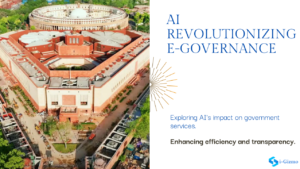Achieving harmonious coexistence between AI and human life requires careful consideration and implementation of several key approaches and principles…emphasizing ethical considerations, collaboration, adaptation and societal impact.
Ethical Frameworks and Regulations
- Establish Clear Ethical Guidelines: Develop and adhere to ethical principles that prioritize human welfare, privacy, and dignity in AI development and deployment.
- Regulation: Implement laws and regulations that govern AI use to ensure accountability and transparency.
- Example: The European Union’s General Data Protection Regulation (GDPR) sets strict guidelines for how personal data can be collected, stored, and processed, ensuring that AI systems respect individuals’ privacy rights.
Collaborative Development
- Human-Centric Design: Design AI systems with human needs in mind, focusing on enhancing human capabilities rather than replacing them.
- Inclusive Development: Include diverse voices in AI development to mitigate biases and ensure equitable outcomes.
- Example: Google’s Project Euphonia aims to improve speech recognition for people with speech impairments, demonstrating AI’s potential to assist and empower individuals with disabilities.
Education and Adaptation
- Education and Training: Equip people with skills needed to work alongside AI technologies, fostering a workforce that can adapt to technological advancements.
- Continuous Learning: Encourage ongoing learning and adaptation to keep pace with AI developments.
- Example: Coursera and other online platforms offer courses in AI and machine learning, enabling individuals to acquire skills needed to work alongside AI technologies and adapt to changing job markets.
Privacy and Security
- Data Protection: Safeguard personal data and ensure individuals have control over their information used by AI systems.
- Cybersecurity: Strengthen defenses against cyber threats to protect AI systems from malicious attacks.
- Example: Apple’s differential privacy approach in iOS uses AI to enhance user experience by collecting data in a way that preserves individual privacy, demonstrating a balance between data utility and protection.
Socioeconomic Impact
- Job Displacement Mitigation: Prepare for potential job displacement by AI through retraining programs and policies that support affected individuals.
- Economic Equity: Address disparities in access to AI technologies to prevent widening socioeconomic gaps.
- Example: Finland’s government-funded “Elements of AI” course aims to educate 1% of its population on AI basics, fostering a more informed society and reducing the potential for economic inequality related to AI knowledge.
Human-AI Interaction
- Natural Interfaces: Develop intuitive interfaces for human-AI interaction that enhance user experience and accessibility.
- Trust and Transparency: Build trust through transparent AI decision-making processes and clear communication of AI capabilities and limitations.
- Example: Amazon Alexa and Google Assistant utilize natural language processing and speech recognition to create intuitive interfaces that enable seamless interaction between users and AI systems.
Ethical AI Use Cases
- Beneficial Applications: Focus AI development on applications that benefit society, such as healthcare, environmental sustainability, and education.
- Avoid Harmful Use: Identify and mitigate potential risks associated with AI misuse, such as misinformation, surveillance, and weaponization.
- Example: IBM’s AI-powered Watson for Oncology assists doctors in making treatment decisions by analyzing vast amounts of medical literature and patient data, improving healthcare outcomes while adhering to ethical standards.
Continuous Assessment and Improvement
- Monitoring and Evaluation: Regularly assess AI systems for their societal impact and effectiveness, making improvements based on feedback and research findings.
- Adaptive Policies: Develop flexible policies that can evolve with technological advancements and changing societal needs.
- Example: The Partnership on AI, a consortium of tech companies, academics, and nonprofits, collaborates to ensure AI technologies are developed and deployed responsibly, with ongoing evaluation and improvement.
Public Engagement and Dialogue
- Community Involvement: Involve the public in discussions about AI ethics, benefits, and concerns to ensure diverse perspectives are considered.
- Education Campaigns: Raise awareness about AI capabilities, limitations, and ethical considerations through educational initiatives and public campaigns.
- Example: The Future of Life Institute hosts conferences and public forums where experts and the public discuss AI’s impact on society, fostering informed decision-making and ethical AI development.
Global Collaboration
- International Cooperation: Foster collaboration among countries and organizations to establish global standards and norms for AI development and deployment.
- Cross-Cultural Understanding: Consider cultural differences in AI adoption and adaptation to ensure inclusivity and respect for diverse values.
- Example: The Global Partnership on Artificial Intelligence (GPAI), an international initiative, brings together countries to develop best practices and guidelines for AI that promote human rights, inclusivity, and transparency globally.
By integrating these principles and practices, AI and human life can co-exist in harmony, leveraging technological advancements while prioritizing ethical considerations and human well-being.
#ethicalAI #collaborativecevelopment #adaptationtochange #societalimpact #lms #artificialintelligence #digitaltransformation #applicationdevelopment #analytics #itinfrastructure #elearning




